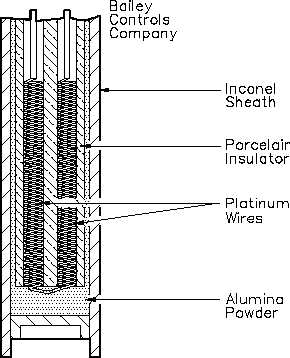Temperature Detectors
RESISTANCE TEMPERATURE DETECTORS (RTDs)
RTD elements are usually long, spring-like wires surrounded by an insulator and enclosed in a
sheath of metal. Figure 2 shows the internal construction of an RTD.
Figure 2 Internal Construction of a Typical RTD
This particular design has a platinum element that is surrounded by a porcelain insulator. The
insulator prevents a short circuit between the wire and the metal sheath.
Inconel, a nickel-iron-chromium alloy, is normally used in manufacturing the RTD sheath
because of its inherent corrosion resistance. When placed in a liquid or gas medium, the Inconel
sheath quickly reaches the temperature of the medium. The change in temperature will cause the
platinum wire to heat or cool, resulting in a proportional change in resistance.
This change in resistance is then measured by a precision resistance measuring device that is
calibrated to give the proper temperature reading. This device is normally a bridge circuit, which
will be covered in detail later in this text.
Rev. 0
Page 3
IC-01

